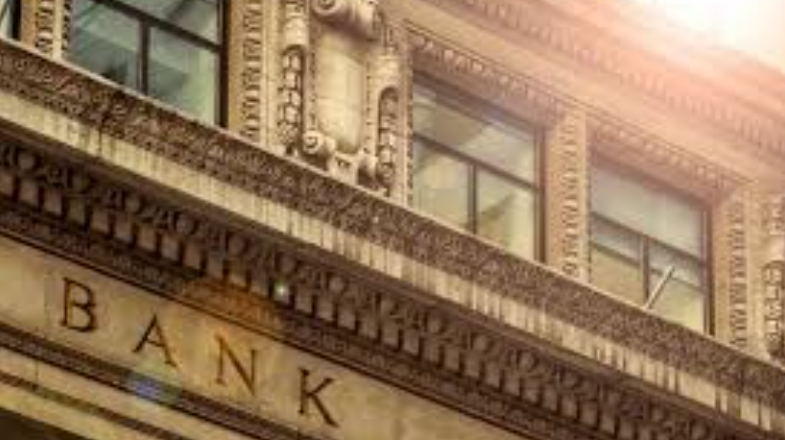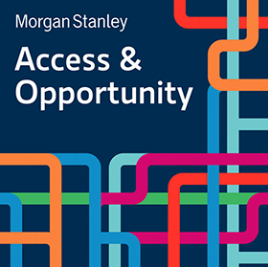I have been asked a lot over the last few days about the failure of Silicon Valley Bank.
Here’s my take on it.
You can also read it on Linkedin
Institutions Do Not Fail, People Do
This weekend the frenzy surrounding the demise of Silicon Valley Bank was palpable. Business owners were worried about making payroll and investors worried their portfolios would be worthless. I must admit I was not worried; I was angry.
During the mid-90s I had the privilege to serve as a presidential appointee under President Clinton at the Office of Thrift Supervision. Never heard of it. No surprise. The Office of Thrift Supervision (OTS) merged with the Office of the Comptroller of the Currency on July 21, 2011. The Office of Thrift Supervision was a division of the U.S. Treasury Department that was responsible for issuing and enforcing regulations governing the nation’s savings and loan (S&L) industry. This division was responsible for ensuring the safety and soundness of deposits in thrift banks. This was done by auditing and inspecting the banks to see if government regulations and policies were being administered.
When I joined the administration, the government was managing the S&L crisis which saw almost a third of the U.S. institutions fail within 10 years. This crisis resulted in the failure of the 3,234 savings and loan associations in the United States between 1986 and 1995. The S&L crisis cost $160.1 billion, of which $132 billion was subsidized by American taxpayers. Critics believe the cause of the S&L crisis was excessive lending, speculation, and risk-taking driven by bank executives.
Fast forward to 2008, we learned the phrase “too big to fail.” From 2008–2012, the Federal Deposit Insurance Corporation (FDIC) closed 465 failed banks. How did this happen?
Before the financial crisis in 2008, regulations passed in the U.S. coerced the banking industry to allow more consumers to buy homes. When increasing numbers of U.S. consumers defaulted on their mortgage loans, U.S. and international banks lost money on the loans. Banks stopped lending to each other, and it became tougher for consumers and businesses to get credit.
The mortgage crisis led to the demise of major institutions like Lehman Brothers. By 2008, Lehman had assets of $680 billion supported by only $22.5 billion of firm capital. (Do the math) The risky commercial real estate holdings were thirty times greater than capital. Lehman’s closure was due to the default of mortgage-backed securities (MBS) that were mostly backed with subprime loans.
These failures led to many policies and systemic changes being enacted by the federal government. After the demise of Lehman, Congress passed the Emergency Economic Stabilization Act (EESA) in October 2008. It included the $700 billion Troubled Asset Relief Program (TARP), which authorized the U.S. government to purchase distressed assets to stabilize the financial system. The laws signaled that the government was bailing out big banks and insurance companies because they were “too big to fail,” meaning that their failure could lead to a collapse of the financial system and the economy.
Two years later, Congress passed the Dodd-Frank Wall Street Reform and Consumer Protection Act of 2010. Dodd-Frank was created to help avoid the need for any future bailouts of the financial system. Among its pages of provisions were new regulations regarding capital requirements, proprietary trading, and consumer lending.
So, with all this legislation, how did this happen? It is important to know that legislation provides rules of engagement and remedies when things go wrong. The laws do not make bank leadership do the right thing. But legislation does provide a means to protect consumers from bad behavior. So, who is to blame?
Many pundits blame interest rates for these failures. As higher interest rates caused the market for initial public offerings to shut down for many startups and made private fundraising more expensive, many Silicon Valley Bank clients started pulling money out to meet their cash needs. This led to Silicon Valley Bank looking for ways to fund its customers’ withdrawals. To fund this gap, the bank sold a $21 billion bond portfolio consisting mostly of U.S. Treasuries. The portfolio was yielding an average of 1.79%, far below the current 10-year Treasury yield of around 3.9%. (Do the math) This forced SVB to recognize a $1.8 billion loss, which it then tried to fill through a capital raise.
SVB said it would sell $2.25 billion in common equity and preferred convertible stock to fill the gap. Its shares ended trading on the day down 60%, as investors feared that the deposit withdrawals would cause the bank to raise even more capital. When SVB was unable to find funding, the Federal Deposit Insurance Corporation (FDIC) announced that SVB was shut down and placed under its receivership.
Interest rate risk is fundamental to the business of banking. All bank leadership is aware of this. Changes in interest rates may expose an institution to adverse shifts in the level of net interest income or other rate-sensitive income sources and hamper the underlying value of its assets and liabilities. In layman’s terms, banks can lose money. Therefore, bank leadership should exercise its fiduciary duty and make sound decisions that are in the best interest of its stakeholders, and not just its shareholders.
In the case of SVB, we cannot write off the fact that Joseph Gentile, Chief Administrative Officer for the bank, was the CFO of Lehman Brothers right before the crisis.
It was reaffirming to hear from President Biden that the government will hold those responsible for the bank failure accountable for their actions. Luckily there is precedent for this.
During the S&L crisis, more than 1,000 bankers were convicted by the Justice Department. Among those jailed were Charles Keating Jr., whose Lincoln Savings and Loan cost taxpayers $3.4 billion, and David Paul, who was sentenced to 11 years in prison for his role in the $1.7 billion collapse of Centrust Bank.
Even during the Great Depression, when the federal government did not have legislation in place to hold individuals accountable, blame was assigned to bank leadership.
Beginning in 1932, the Senate Committee on Banking and Currency opened a public inquiry into the stock market crash by establishing the Pecora Commission. The Commission’s investigation led to the indictments of several finance leaders. However, since banking laws did protect against the kind of speculation that initiated the crash, most escaped being prosecuted.
Among those summoned before the commission was Charles Mitchell, president of the National City Bank, now Citibank. Mitchell built the bank into the nation’s largest by breaking it into two branches. One half of the firm became its investment arm, the other was its banking arm. The investment arm sold what would prove to be bad investments to clients, often financed with money borrowed from the banking arm. When the market crashed, clients lost millions and the bank nearly collapsed. Mitchell resigned and admitted to the Pecora Commission that he knew his bank was pushing bad investments. He went on to be indicted for tax evasion but was ultimately acquitted. He paid a $1 million civil fine instead.
Robert McElvaine, a Great Depression scholar, and professor of history at Millsaps College, captured my sentiments best when he noted that the Pecora Commission showed the nation that “real people, not just institutions” were behind the crash of ’29.
The resulting public backlash from the Great Depression created change. The Pecora Commission endorsed the creation of the Securities and Exchange Commission, predicting it would “materially abate, if not eradicate, abuses that caused much economic distress.” It also endorsed the Glass-Steagall Act, which until its repeal in 1999, required a strict separation of commercial and investment banks.
So, who is to blame today? Two sets of people, at the very least.
First, bank leadership is at fault. Taking bets with other people’s money is never a good thing. Overleveraging a company with more debt than you can service will likely lead to a crisis; do the math. The lack of fiduciary duty of bank leaders and the questionable decisions made by SVB leadership to improve the bank’s financial statements for its investors led to last-minute selloffs in a challenging market.
Second, our legislators. As I watched the hearings with Federal Reserve Chairman Jerome Powell this month, I was struck by the focus of both parties on issues other than the US economy. The statements of our political leadership started with each party sharing their opinions, party needs, and end goals for party leadership. There was not enough conversation on the impacts of rates on consumers, oversight needed to hold institutions accountable, and the like.
I am sure there will be more bank failures in the future; they are inevitable as leaders continue to focus on short-term investor returns and not consumer safety. I can only hope that lessons over the last 90 years will help inform a better path of regulation and oversight so that consumers are not impacted by the bad and risky decisions of the privileged few. Data shows that the top 1% holds 15x more wealth than the bottom 50% combined. However, we cannot allow the top 1% of our financial leaders to continue to determine the economic faith and well-being of the entire country.



